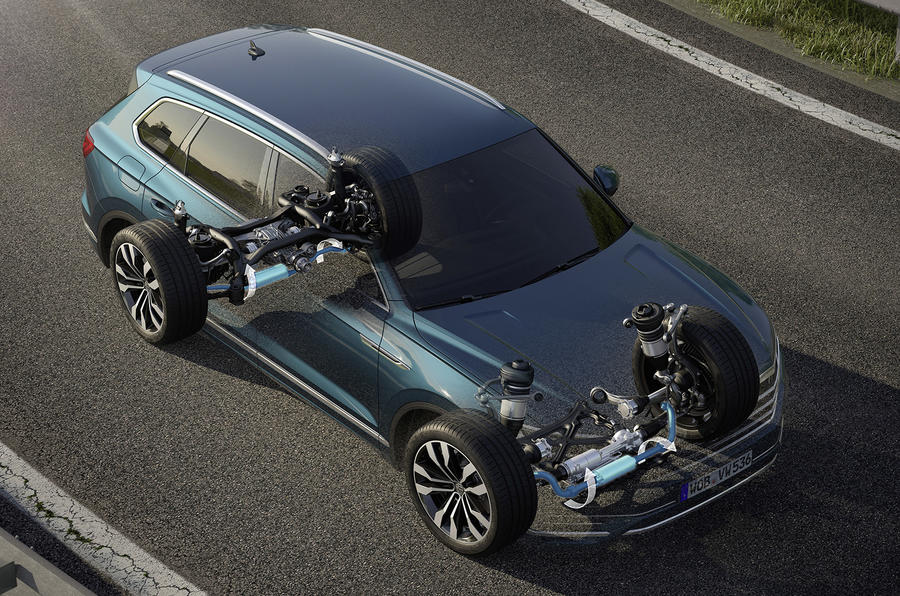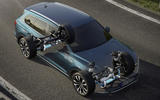In a world where cars have become so fiendishly complex, one key component of suspension systems still stands out for its relative simplicity. The anti-roll bar (known over the pond as a sway bar or stabiliser bar and not to be confused with a roll cage, which gives protection if the car inverts) is there to inhibit body roll in corners. In its purest form, it’s a length of spring steel bar or tube, shaped like a square U, connecting to the suspension at each end of the axle. Some cars have two (front and rear axle), some just one and a few none at all.
The idea of an anti-roll bar is to reduce body roll as the car corners independently and without significantly affecting the stiffness (rates) of the suspension springs. Fitting them to road cars allows spring and damper rates to be soft enough for comfort while keeping body roll in check. Too much roll is uncomfortable, and as the suspension moves to extremes, wheel and tyre angles change, affecting cornering stability.
The tails of the anti-roll bar are connected to the left and right suspension by a bush or linkage, and although mechanically simple, their effect is a little more complicated, because they also affect handling balance or, in other words, understeer and oversteer.
The long, straight portion of an anti-roll bar is clamped across the body at right angles to the centre line, then curves round through 90deg at each end to pick up points on the suspension. As the car rolls, the bar twists along its length, transferring the weight of the body onto the suspension linkage, outer wheel and tyre contact patch.
As the downward force on the tyre contact patch increases, the coefficient of friction reduces and the tyre’s slip angle increases (the tyre begins to move sideways relative to the direction the wheel is pointing). If the anti-roll bar is stiffened more on the front axle, the result is understeer. More on the rear and it’s oversteer.
So apart from controlling body roll, anti-roll bars can be used to influence handling balance (the tendency to understeer or oversteer on a neutral throttle). On racing cars, changing the setting of adjustable anti-roll bars lets you tune the car for individual circuits and conditions.
Although the anti-roll bar is essentially a simple device, manufacturers have found a way to make them more complex in the form of active anti-roll bars. Stepper motors (or sometimes hydraulic actuators) splitting the torsional (twisting) section of an anti-roll bar can alter the force it exerts.
On a straight road, the two halves can be decoupled, which can improve ride comfort over uneven surfaces when the bars aren’t needed, and reinstate torsional stiffness in milliseconds for cornering. The stepper motor in the Volkswagen/Audi system incorporates a small epicyclic gearbox, but there are others with hydraulic actuators. The systems are used on premium cars and on SUVs such as the Volkswagen Tiguan and Audi Q5. Decoupling also improves suspension articulation for off-roading.









Join the debate
Add your comment
The audi quattro
Was made so a FWD company could be eligible for rallying and anti roll bars on high/off balance vehicles are an obvious necessity for obvious reasons.
Autocar, what has happened to
This article has nothing like the depth that something as fundamentaly important as anti roll bars deserves, and it contains a number of mistakes. For starters the motors used in active anti roll bars are not of the stepper type, secondly a VW tiguan does not come with active anti roll bars; their cost, weight and power consumption mean they are more suited to cars at a higher price point.
Ads are getting smarter...
I googled this topic and volkswagen-newsroom display a press release with the above photo of a TOUREG!!! It bosts about the benefits of its two electrocnically controlled anti-roll bars, each fitted with a step motor. The link between the new TOUREG and the original quattro is... none. This article is a hidden VAG advert, albeit not a very good one. Dislike Auotcar:(